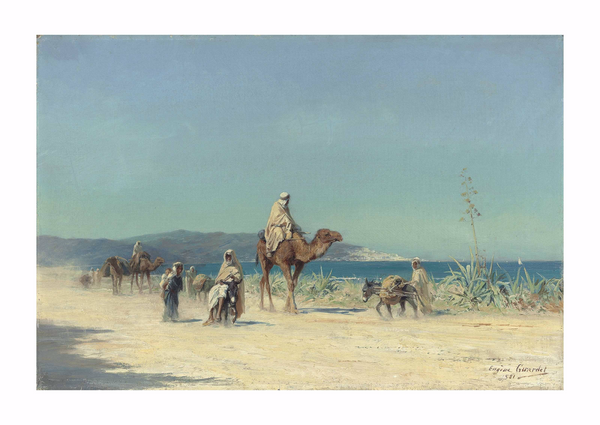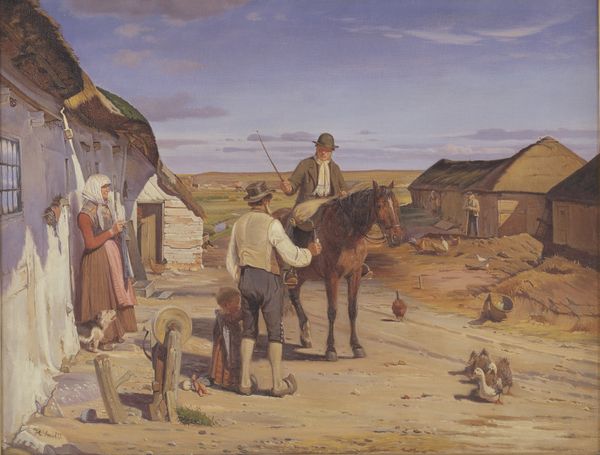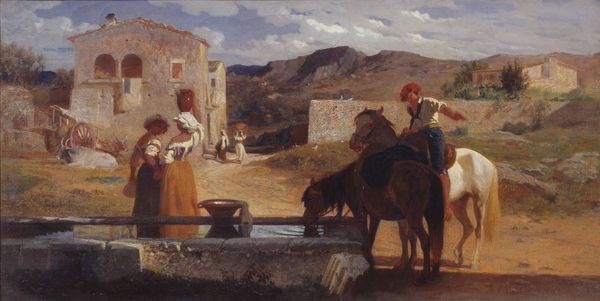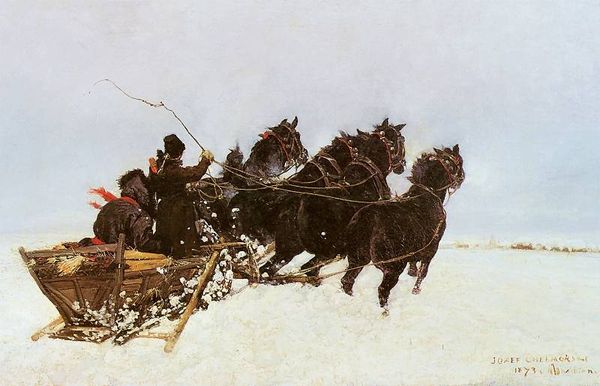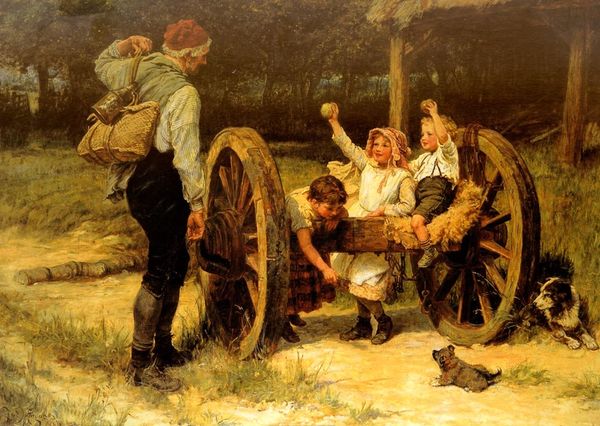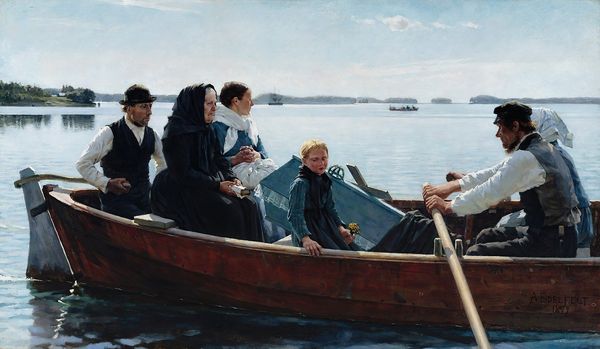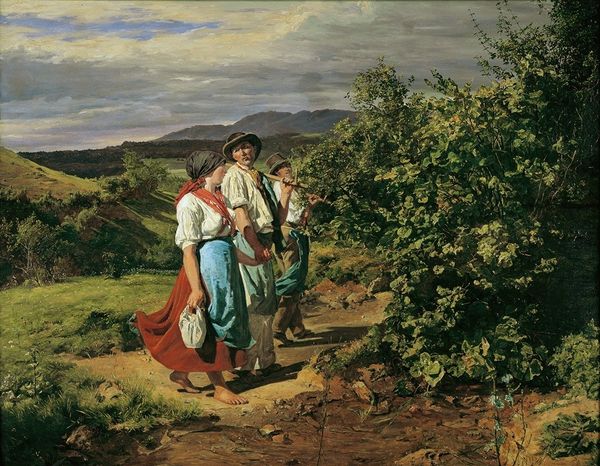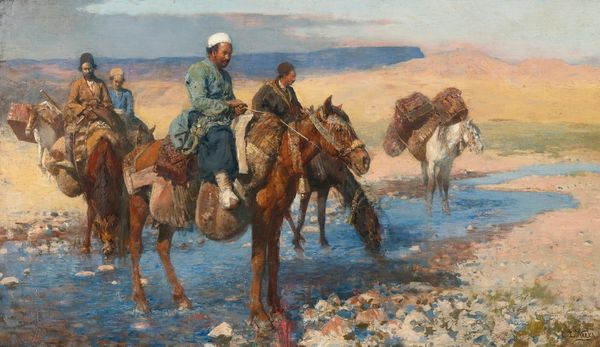
Copyright: Public Domain: Artvee
Editor: This is "Parti fra Leksand med dalarbönder på söndagsudflugt i hestevogn," from 1860, by Wilhelm Marstrand. It's oil on canvas, and depicts what looks like a family outing. The light and the details on the horse and people’s clothes are beautiful, but what strikes me most is the seeming disparity between those in the cart versus the woman with child who is walking. What do you see in this piece? Curator: For me, this image really highlights the intersection of labor and leisure in 19th-century rural Sweden. The horse, cart, and even the clothing all represent a level of production, the physical act of making or acquiring. Notice the contrast between the polished wooden cart and the roughspun fabric of the walking woman's dress. The artist clearly intends to display the visible signs of different levels of consumption within this society. Editor: That's a fascinating point! I hadn’t thought about the materials themselves being indicative of status. So, the cart isn’t just a cart, but a product of specific labor and access to resources? Curator: Exactly. And look at how the artist renders the details of the harness versus the simple cloth wrapping the baby to the woman's chest. The details really emphasize the social and economic differences implied here. How is leisure made possible, and for whom? These are crucial questions about the material circumstances surrounding the scene. Editor: It's making me rethink the seemingly idyllic scene as less of a snapshot of rural life and more of a commentary on social strata, even within a small community. Thank you. Curator: Precisely. By analyzing the materials, the production, and the means of portrayal, we gain access into what may be missing at first glance. It really is about looking past what appears simple on the surface and questioning the material roots of every element.
Comments
No comments
Be the first to comment and join the conversation on the ultimate creative platform.


